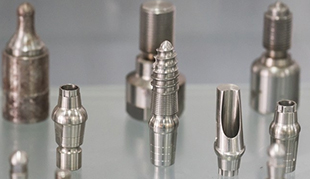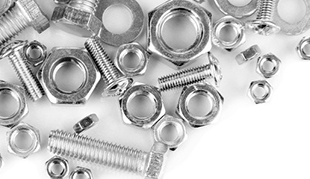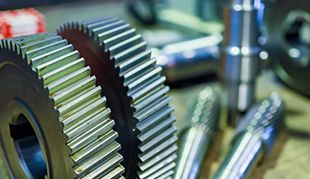What is the Connection between Metal Injection Molding and Powder Metallurgy
Metal Injection Molding (MIM) and Powder Metallurgy (PM) are two prominent manufacturing processes that have revolutionized the production of intricate metal components. While they might seem distinct at first glance, a closer look reveals a strong connection between these techniques, both of which rely on the versatility of powdered metals to create a wide range of products. Let's delve into the intricacies of MIM and PM and explore the underlying link that binds them together.
Powder Metallurgy: The Foundation
Powder metallurgy is a manufacturing process that involves transforming metal powders into solid components by compacting and sintering. The process begins with the selection of metal powders, which are often produced through methods like atomization, mechanical alloying, or chemical precipitation. These powders are then mixed, shaped into the desired form using various techniques like pressing or extrusion, and finally sintered in a controlled atmosphere.
The versatility of powder metallurgy lies in its ability to produce intricate shapes and near-net parts, reducing the need for extensive machining. This results in reduced material wastage, making it a cost-effective and eco-friendly manufacturing method. Powder metallurgy finds application in diverse industries such as automotive, aerospace, medical devices, and electronics.

Metal Injection Molding: A Leap Forward
Metal Injection Molding (MIM) takes the principles of powder metallurgy a step further by combining them with plastic injection molding techniques. MIM involves creating a feedstock mixture by blending fine metal powders with a thermoplastic binder material. This mixture is then heated and injected into a mold, much like plastic injection molding. The next step, known as debinding, removes the binder from the molded parts, leaving behind a "green" part composed of metal powder.
The debound parts are then sintered to fuse the metal particles, resulting in a dense and strong metal component. MIM's unique advantage is its ability to produce complex geometries and components with exceptional surface finish and dimensional accuracy. This makes MIM suitable for applications where traditional machining or powder metallurgy methods fall short.
The Link between MIM and PM
At their core, both Metal Injection Molding and Powder Metallurgy rely on the utilization of metal powders to create intricate components. The shared emphasis on powder characteristics, such as particle size, shape, and composition, underscores the connection between the two processes. Additionally, the sintering step, a pivotal stage in both MIM and PM, serves as a common thread, as it drives the fusion of metal particles, resulting in the final dense product.
The innovative nature of MIM lies in the integration of plastic injection molding with powder metallurgy, enabling the production of complex shapes that traditional powder metallurgy might struggle to achieve. This combination grants MIM a unique position in the realm of advanced manufacturing, catering to industries that demand high precision and intricate designs.
Applications and Future Prospects
Both MIM and PM have established themselves as indispensable manufacturing methods across various industries. Powder metallurgy continues to be the go-to choice for producing cost-effective, high-strength components with minimal waste. On the other hand, Metal Injection Molding's growing popularity stems from its ability to produce intricate parts with minimal post-processing, thus saving time and resources.
As technology advances and materials science evolves, the connection between MIM and PM will likely become even more pronounced. Innovations in powder production, binder materials, and sintering techniques will further enhance the capabilities of both processes, paving the way for novel applications in sectors ranging from electronics and healthcare to energy and beyond.
Metal Injection Molding and Powder Metallurgy share a strong connection rooted in their utilization of metal powders and the sintering process. While Powder Metallurgy serves as the foundation, Metal Injection Molding elevates the capabilities of this technique, enabling the production of intricate and precise components. These manufacturing processes not only shape industries today but also hold the promise of transforming the landscape of advanced manufacturing in the future.






